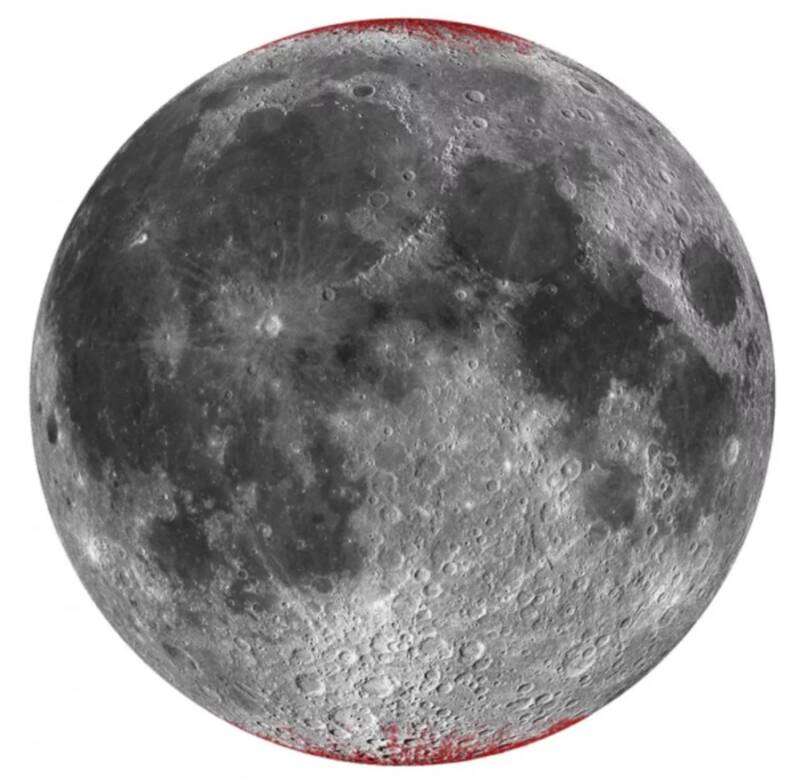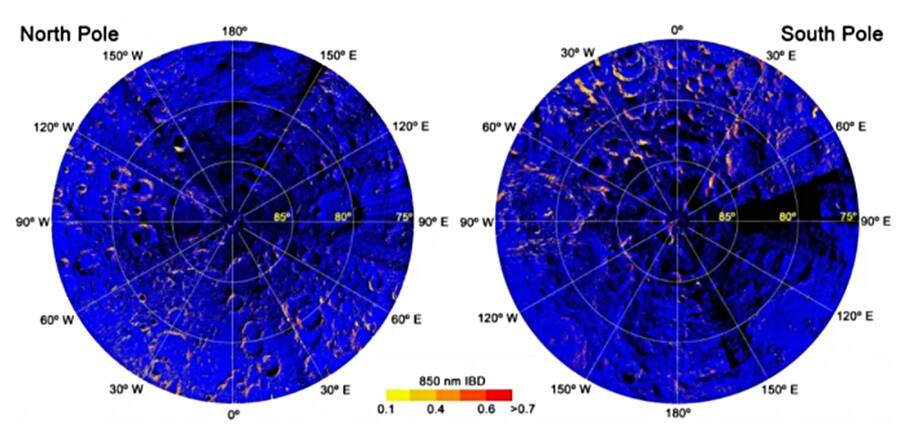A new study detected the presence of rust on both poles of the Moon's surface — a phenomenon that should be unlikely given the Moon's lack of atmosphere.

PixabayScientists say the Moon is rusting — and it could be caused by Earth’s electromagnetic field.
The Moon is losing its white glow and becoming increasingly red — all because it’s getting rusty, scientists say. What’s more surprising is that Earth’s atmosphere might be what’s causing it.
The term “rusty” here refers to iron oxide, a red compound that forms when iron is exposed to water and oxygen. Mars a.k.a the Red Planet, for example, gets its nickname from the reddish hue that blankets the planet, which results from the iron on its surface combining with oxygen and water.
But if this chemical reaction involves oxygen and water, how does rust form in a dry, atmosphere-less environment like the Moon?
According to Live Science, that’s exactly what a team of scientists have tried to figure out after they detected rust on the north and south poles of the Moon.
“It’s very puzzling. The Moon is a terrible environment for [rust] to form in,” said Shuai Li, the study’s lead author and an assistant researcher at the University of Hawai’i at Mānoa’s Hawai’i Institute of Geophysics and Planetology.

Shuai LiScientists found rusting at both poles of the Moon as shown by the exaggerated red shades on this image.
The rusting on the Moon’s poles was first discovered in 2008. Li had been studying the observation data sent by the JPL Moon Mineralogy Mapper. The instrument surveyed the Moon aboard the Chandrayaan-1 orbiter of the Indian Space Research Organization.
When Li examined the data, he noticed that the spectra — wavelengths of light reflecting on the Moon’s surface — on its poles registered differently than the rest of its surface. When Li zeroed in on the poles, he found that there were iron-rich rocks producing spectra signatures that matched those produced by hematite, a specific type of iron oxide mineral commonly found on the Earth’s surface.
It was a shocking discovery since the naturally dry conditions of the Moon shouldn’t necessitate such compounds to form.
“At first, I totally didn’t believe it. It shouldn’t exist based on the conditions present on the Moon,” co-author Abigail Fraeman, a planetary geoscientist at JPL, said of the discovery. “But since we discovered water on the Moon, people have been speculating that there could be a greater variety of minerals than we realize if that water had reacted with rocks.”
In the study published in the journal Science Advances, the team revealed that the Earth’s atmosphere extends far enough that it has impacted the environment on the Moon’s surface.

Shuai LiA map showing where hematite might be present on the Moon indicated by red shades.
Since the Moon is devoid of its own atmosphere and therefore is without a source of oxygen, it appears to be getting a supply of oxygen from Earth. This terrestrial oxygen is able to reach the Moon through an extension of Earth’s magnetic field called a “magnetotail.”
However, even with the water found on the Moon, there shouldn’t be enough to trigger rusting. But researchers hypothesize that fast-moving dust particles that hit the Moon might free water molecules locked into the Moon’s surface layer, or even carry water molecules themselves.
Another important condition for rust to form on space objects so close to the sun is that they need to have a layer of protective atmosphere to shield them from the sun’s solar winds.
These solar winds produce streams of charged particles that hit anything in its path with hydrogen which acts as a reducer. The presence of this hydrogen hinders the oxidation process needed for rusting to take place.
But the Moon has adopted its own protective shield borrowed from the Earth’s magnetic field that flows to its surface through the magnetotail. According to the study, the magnetotail blocks up to 99 percent of the sun’s solar wind from hitting the Moon during every full Moon. It’s a temporary blanket over the Moon’s surface during which rust forms.
“This discovery will reshape our knowledge about the Moon’s polar regions. Earth may have played an important role on the evolution of the Moon’s surface,” Li said.
The findings indeed represent much of what scientists still don’t know about the celestial objects around our Earth. There is still a lot to be uncovered — even with an object as familiar to us as the Moon.
Next, take a look at 25 retro NASA photos that depict the most important moments in American space exploration so far and watch this incredibly rare supermassive black hole destroying a star as captured by scientists.




